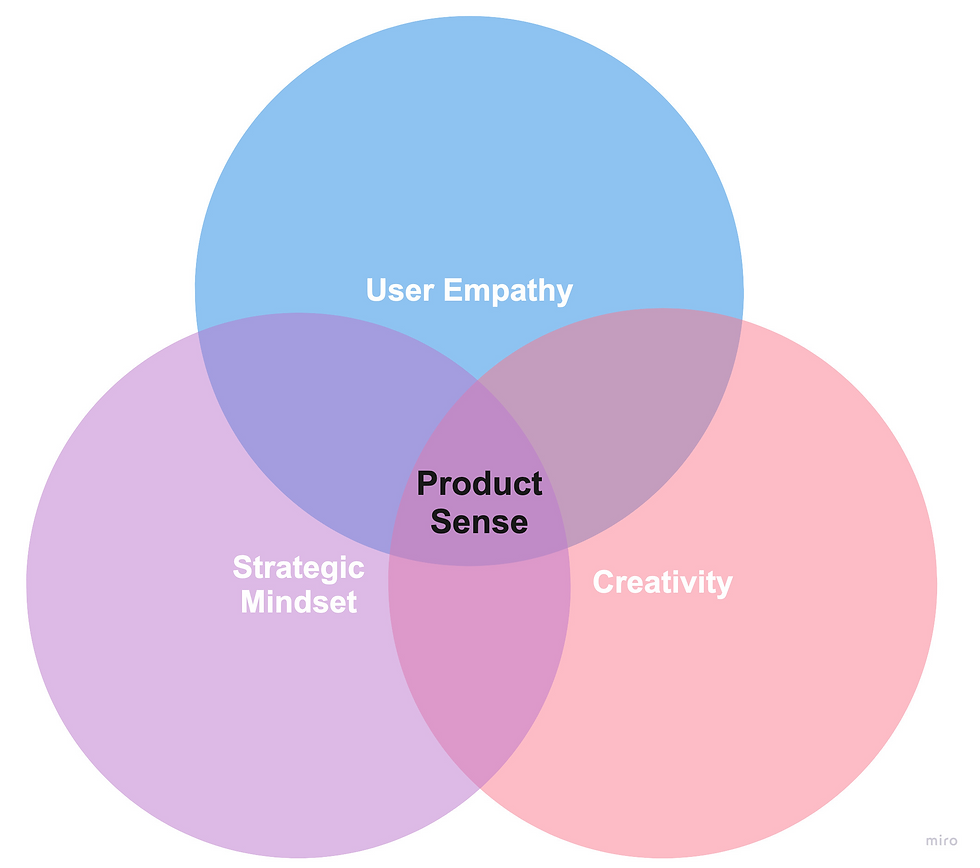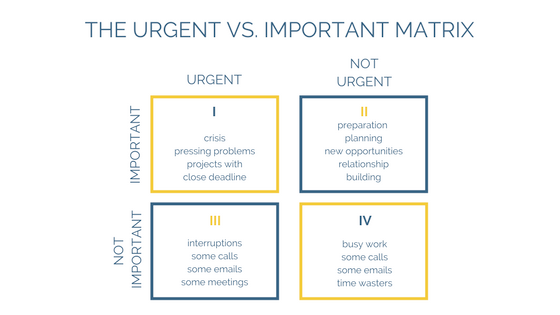What makes a great PM.. and how to become one
- wnitasha
- Aug 27, 2022
- 5 min read
Updated: Aug 29, 2022

While there are several incredible posts out there on what it takes to be a great PM, like this one from Andreessen Horowitz, or this one from Harvard Business Review, I haven't come across a post that distills this extensive and intricate craft of Product management into simple, digestible and actionable components. So, I've distilled key exceptional PM traits into three buckets. That's it, just three.
Product sense & skills
Influencing without authority
Operational excellence
Lets take a deeper look at each.
1. Product Sense & Skills
While Product Sense is one of the most important PM skills, its also one that's the most vague. Product Sense lies at the intersection of
Deep user empathy
Creative thinking
Strategic mindset

1) Deep user empathy to understand key user drivers as well as prominent users pain points. What the key problem that you are trying to solve for the user? Is it an important and painful enough problem to solve?
Employ user empathy at all stages in the product lifecycle.. get customer feedback to build
2) Creative thinking to come up with solutions to maximize impact while minimizing resources. Can you solve the above mentioned problem in a delightful and affordable manner, so the user is willing to invest in switching from their existing lacking solutions / workarounds?
3) Strategic mindset that accounts for intrinsic factors such as the business's strengths and weaknesses, as well as considers opportunities and threats from external factors such as competition, user trends, & social and geopolitical factors. Are you positioned to solve this given your strengths and weaknesses? Should you build or buy? Is your timing right, or are you too early or too late to the game?
How do you get better at it?
Well, Product sense is not a science, it an art. And you can get better at it with practice. Here's a few things you can do:
Stay in tune with the latest trends relevant to your interests and industry
Hypothesize and build the strategic muscle - if you were the CEO of Amazon, what would you invest in next and why?
Get feedback - share your thoughts and get feedback, and improve!
Product skills on the other hand are hard skills, including but not limited to:
1. Road mapping and Prioritization skills to maximize your impact. Be more than just a feature generation engine. Move the needle in the right direction at the right time to meet (and exceed) your business goals.
2. Data analytics to leverage data so you fact check your gut - this is especially relevant in SaaS products
3. UX design skills so you can effectively collaborate with your design counterparts to make the right decisions to build a stellar user experience
4. Technical chops to be able to understand technical challenges and complexity, intelligently interface with and support your engineering team, and maximize limited engineering resources.
2. Influencing without Authority
As a Product leader, your success is tied to the performance of your cross functional teams - your engineering counterparts, your design partner, product marketing lead, sales, customer success management teams, and sometimes, your executive leadership team. And you do not have direct authority over any of them. Hence, the ability to influence without authority plays a key role in your success. Here's a few tips on how to succeed in understanding, empathizing with and influencing others on your extended teams:
1. Be the Subject matter expert
Know your domain - be the expert in it. Know your product like the back of your hand, and know your competitors like the front of your hand. What is your strength and weakness, and what is your competition's? What's your core value proposition and how does it differentiate from the others?
For example: If you are a PM at Zoom - know the ins and outs of video conferencing and collaboration. Know where it started, and why it is where it is today, so you can hypothesize where it might go next. WebEx started as an audio conferencing and screen sharing tool, Skype started as a audio conferencing tool, and MS teams was build on top of it. None of these tools were positioned for or built for video in the cloud - which is where Zoom differentiated itself, and the result - a steller video first, cloud built, simple and easy to use video conferencing that doesn't suck.
Be the expert, so you can share your expertise and guide, inspire and lead your team
2. You are in it together
Emphasize the shared goal and vision that you are all marching towards. Let that shared goal unite you.
It's not me vs you, it us together. We will leverage our own unique strengths and play our part and win together.
3. Relationships:
This is foundational to your success. You have to understand and respect your team members - what drives them and motivates them? Why are they in this? Is your designer here because they want to sharpen their design skills and be the best front-end designer? Great, highlight projects that let them exercise that muscle. Share why are you in it? Be honest and transparent. It builds trust - and trust is fundamental.
Listen to your team, appeal to their self interest, while marching towards your shared goal and vision.
Oh, and relationships build over time. Give it time.
3. Operational Excellence
As a Product leader, you are managing several related but diversified tasks to keep the machine functioning. You have multiple stakeholders to manage including but not limited to customers & executive leadership, cross functional conversations to drive, as well as your own individual heads down work to do - refer back to Product Sense and Skills. It's up to you to prioritize and track yourself. Nobody is giving you a task list - you manage yourself. Sounds like a lot right? Here's a few tips to help:
1. Task management tools
Leverage task management tools to keep track of your vast and ever growing list of things to do. There are several tools out there... Asana, Notion, Monday, or just plain old pen and paper. Use whatever works for you - get your list out of your head, and on to (maybe digital) paper so you can prioritize and attack it, as well as free up mental space to focus on the tasks at hand.
2. Prioritize
I personally like the Eisenhower's Urgent/Important matrix to separate signal from noise and prioritize your own personal roadmap of things to do.

There are several tools out there, use what works for you, but be intentional about how you spend your time.
3. Excellent communication skills
As a Product leader, you are at the hub of the organization, interfacing with engineering, design, marketing, sales, support, finance and customers. Clear, concise and effective communications skills are your friend. And this applies to both written and verbal skills.
That's it. There you have it: 3 broad buckets to becoming an excellent Product manager:
Product sense & skills
Influencing without authority
Operational excellence
Good luck in your journey towards Product Excellence!




A Much Needed article and Subject. We @Venturis Group Inc often discuss this topic and get asked ourselves on "why do we exist" since Product Management is a function that is well embedded in each business. In our view, this is much needed and a significant gap. Even though, Product Managers exist in all organizations and there are roles such as CPO etc.., if you ask most executives on what a Product Manager/CPO does, you are likely to get very different answers from each
Great article Nitasha!